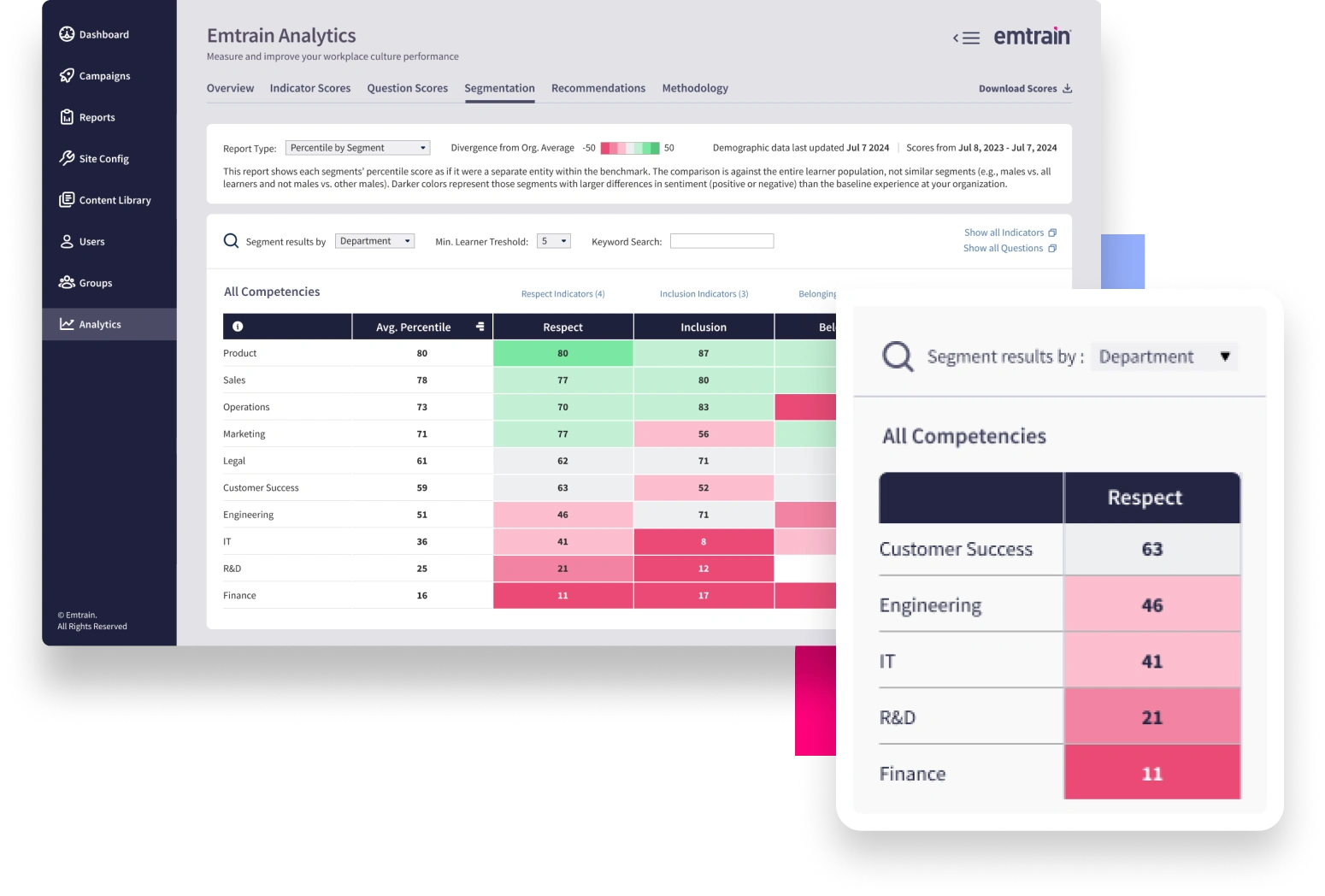An active shooter is an individual actively engaged in killing or attempting to kill people in a confined and populated area. These situations are often unpredictable and evolve rapidly, making it crucial for individuals and organizations to have a clear understanding of what to do in such scenarios. Active shooter incidents can occur anywhere, including workplaces, schools, retail establishments, or healthcare facilities, and often leave employees feeling unprepared and vulnerable.
Proactive workplace training on active shooter scenarios helps save lives, reduces panic, and ensures employees know how to respond effectively to mitigate harm.
Emtrain’s harassment training course is engaging, interactive, and designed to spot and reduce EEO risk.

The concept of an “active shooter” became a critical concern in workplace safety following a notable increase in incidents over the past two decades. In particular, workplaces have become common targets due to their open access and populated environments.
These scenarios emphasize the importance of planning, training, and situational awareness in reducing risks and saving lives.
Understanding these statistics underscores the need for organizations to adopt a structured approach to training and emergency preparedness.
Preparing for an active shooter situation involves proactive measures, including:
You should also make it harder for the shooter to enter by:
If the active shooter is nearby:
In this microlesson, we outline four key strategies for dealing with an active shooter situation based on recommendations from the Department of Homeland Security.
This course equips employees with the knowledge to recognize red flags and prevent violent episodes. Learn how to minimize risks and foster a safer workplace environment.
Ensure your organization is compliant with workplace violence laws by downloading this actionable checklist.
Rebecca Speer, Workplace Violence Expert, Attorney, and Founder of Speer Associates, shares her practical insights on implementing California’s workplace violence law to enhance workplace safety and ensure compliance.
Workplace violence risk can take many forms, from verbal outbursts to physical threats. Recognizing the warning signs and proactively addressing them is essential to preventing escalation.